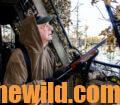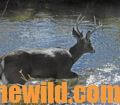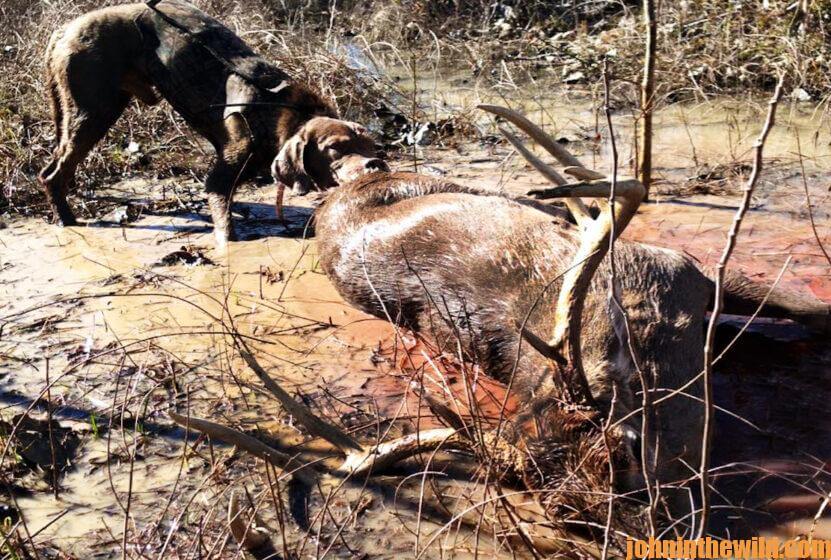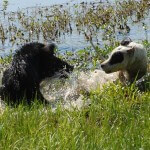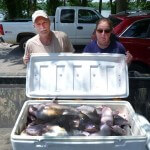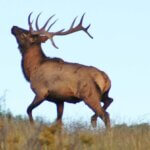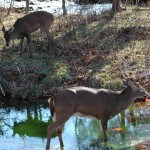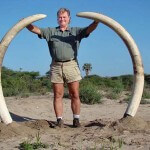Editor’s Note: In many southern states, deer season is still continuing through February, which means hunters will have to deal with the problem of recovering wounded deer. A growing number of hunters in each state are training tracking and trailing dogs to find and recover wounded deer. More states are opening their doors to allow hunters to use tracking dogs – even sometimes on public lands. Who are these folks? Why are they buying and/or teaching dogs to become tracking dogs? What tools are they using to teach keen-nosed dogs to find deer when the blood trail has run out? If you live in a state where hunters are permitted to use tracking and trailing dogs, you may want to consider getting a young dog now and training him to track deer for next year’s deer season. (Be sure to check your state’s regulations). I met Patrick Jones of McCalla, Alabama, who’s in the construction business at the Department of Conservation’s Adult Mentoring program for bowhunting deer. Jones told me about how a tracking and trailing dog could make a huge difference in your enjoying deer hunting.
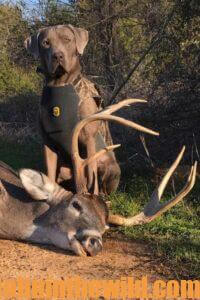 My first experience with a tracking dog happened in South Carolina when I was hunting several years ago with Hayward Smith, who owned a hunting lodge. One of his hunters shot a deer and said the deer ran to the left of his stand but when Smith and his yellow lab went to look for the deer, the dog went to the right. The hunter said, “That dog’s lying. There’s no way he’s going to find my deer by following that dog!”
My first experience with a tracking dog happened in South Carolina when I was hunting several years ago with Hayward Smith, who owned a hunting lodge. One of his hunters shot a deer and said the deer ran to the left of his stand but when Smith and his yellow lab went to look for the deer, the dog went to the right. The hunter said, “That dog’s lying. There’s no way he’s going to find my deer by following that dog!”
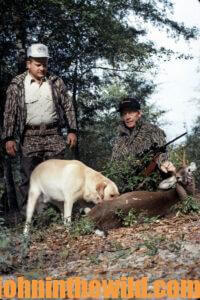 At that time, I’d never seen a tracking dog and didn’t know exactly what they would do or how they tracked a wounded deer. I had stayed with the hunter, who was very disappointed because he was certain the deer had gone the opposite way from the way the dog went. But in the still of the night, about 10-15 minutes after the dog had picked up the trail, I heard Smith yell, “Y’all come to me. Sir, you shot a really nice buck, and he’s right down here.” As the hunter and I walked toward the sound of Smith’s voice, the hunter was shaking his head in disbelief, saying, “I can’t believe they found that deer where they did. I swear I saw that deer run to the left.” When we reached that big, dead buck, Smith smiled and said, “You’ve got a really fine buck, fella!”
At that time, I’d never seen a tracking dog and didn’t know exactly what they would do or how they tracked a wounded deer. I had stayed with the hunter, who was very disappointed because he was certain the deer had gone the opposite way from the way the dog went. But in the still of the night, about 10-15 minutes after the dog had picked up the trail, I heard Smith yell, “Y’all come to me. Sir, you shot a really nice buck, and he’s right down here.” As the hunter and I walked toward the sound of Smith’s voice, the hunter was shaking his head in disbelief, saying, “I can’t believe they found that deer where they did. I swear I saw that deer run to the left.” When we reached that big, dead buck, Smith smiled and said, “You’ve got a really fine buck, fella!”
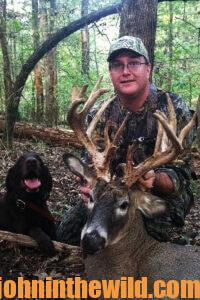 The hunter admitted, “I never would have believed that dog could find my deer. I never would have looked in this place because I was certain the deer ran in the opposite direction.” Smith smiled and said, “The good thing about a tracking dog is that he doesn’t have to see in which direction the deer’s run. He just has to use his nose to follow the scent of the wounded deer to locate him.”
The hunter admitted, “I never would have believed that dog could find my deer. I never would have looked in this place because I was certain the deer ran in the opposite direction.” Smith smiled and said, “The good thing about a tracking dog is that he doesn’t have to see in which direction the deer’s run. He just has to use his nose to follow the scent of the wounded deer to locate him.”
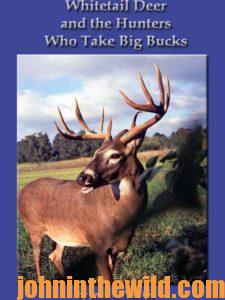 To learn more about hunting deer, see John E. Phillips’ book, “Whitetail Deer and the Hunters Who Take Big Bucks,” available in Kindle, print and Audible at http://amzn.to/2bYwYOK. For more information about hunting for deer, check out John E. Phillips’ “Jim Crumley’s Secrets of Bowhunting Deer,” now available as of January 1, 2022, in Audible, as well as paperback and Kindle at https://www.amazon.com/. You may have to copy and paste these links into your browser. (When you click on either book, notice on the left where Amazon says you can read 10% of this book for free and hear 10% for free). On the right side of the page and below the offer for a free Audible trial, you can click on Buy the Audible book. To see many of John E. Phillips’ books, go to https://www.amazon.com/John-E.-Phillips/e/B001HP7K6O.
To learn more about hunting deer, see John E. Phillips’ book, “Whitetail Deer and the Hunters Who Take Big Bucks,” available in Kindle, print and Audible at http://amzn.to/2bYwYOK. For more information about hunting for deer, check out John E. Phillips’ “Jim Crumley’s Secrets of Bowhunting Deer,” now available as of January 1, 2022, in Audible, as well as paperback and Kindle at https://www.amazon.com/. You may have to copy and paste these links into your browser. (When you click on either book, notice on the left where Amazon says you can read 10% of this book for free and hear 10% for free). On the right side of the page and below the offer for a free Audible trial, you can click on Buy the Audible book. To see many of John E. Phillips’ books, go to https://www.amazon.com/John-E.-Phillips/e/B001HP7K6O.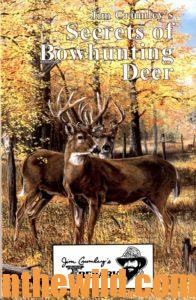
Tomorrow: Tracking Dogs Locate Wounded Deer

